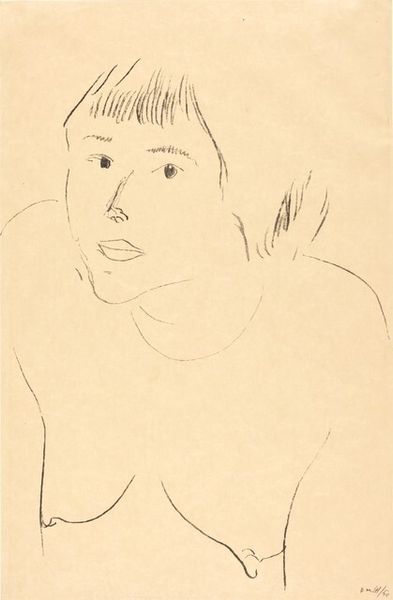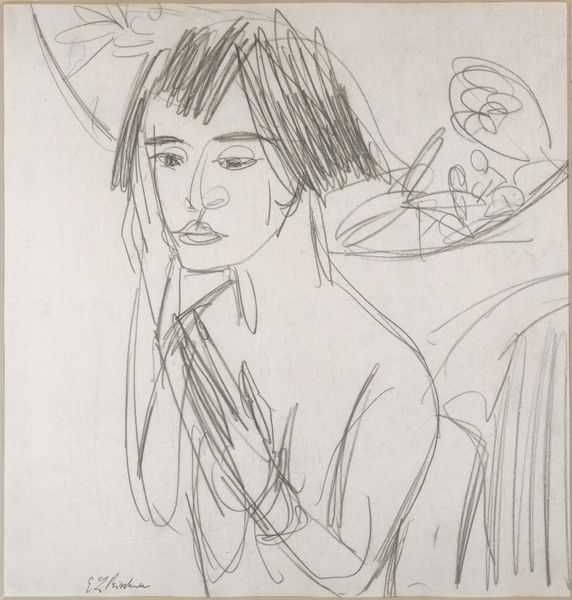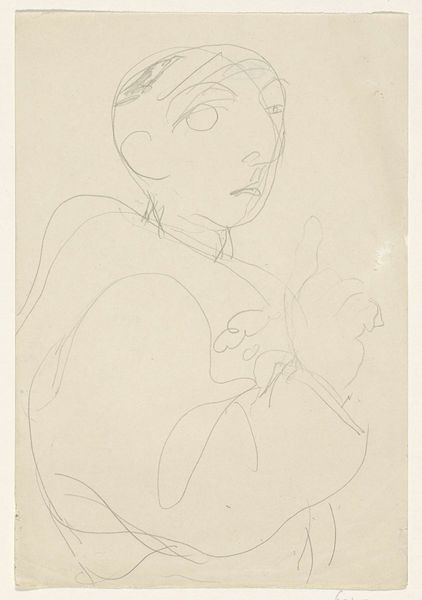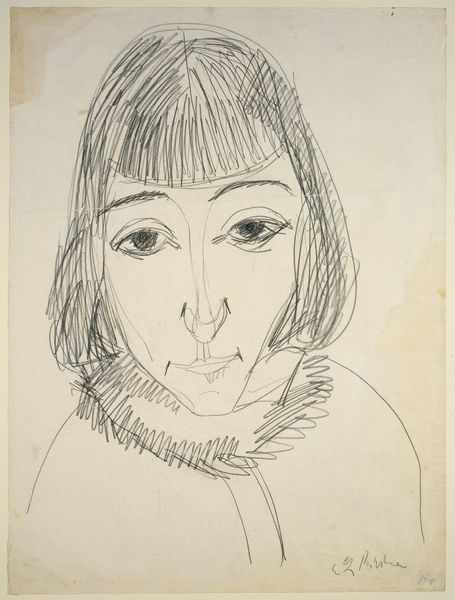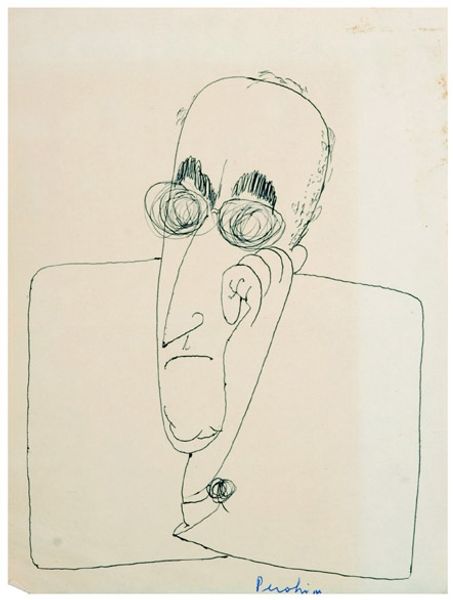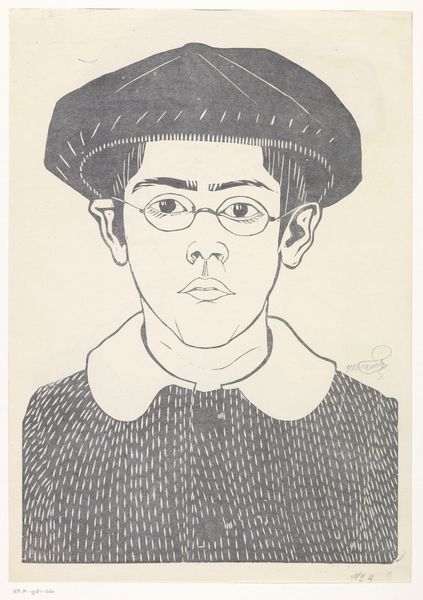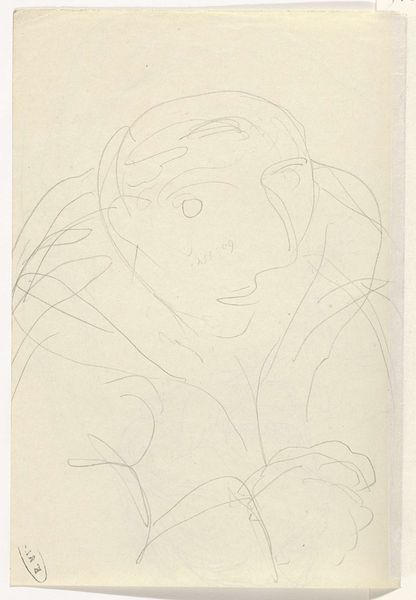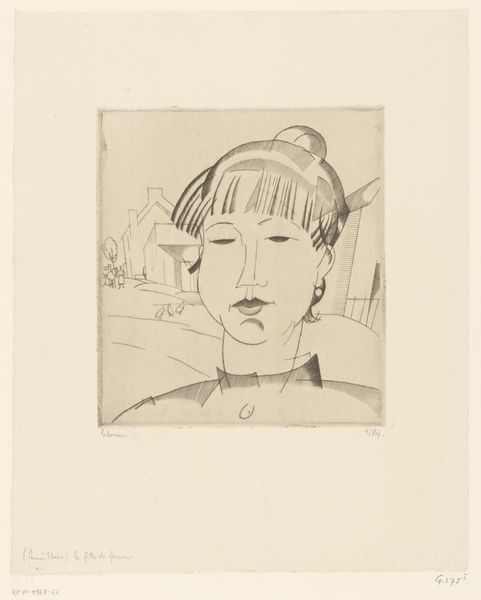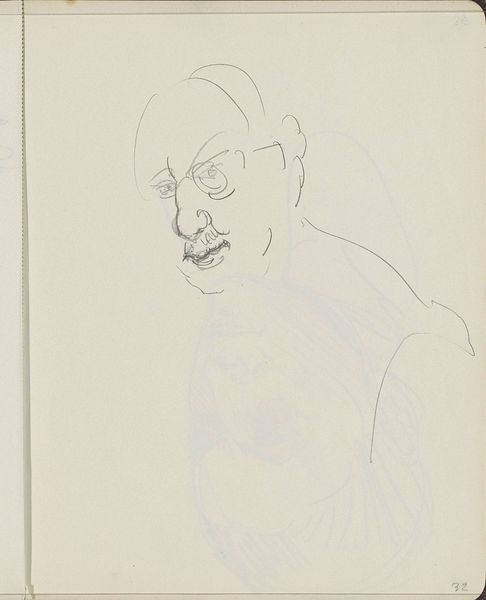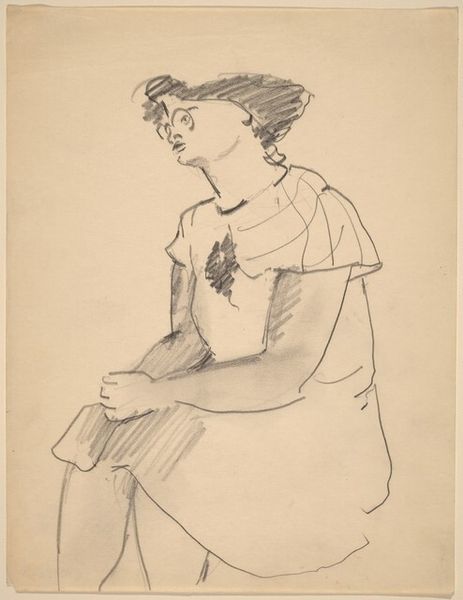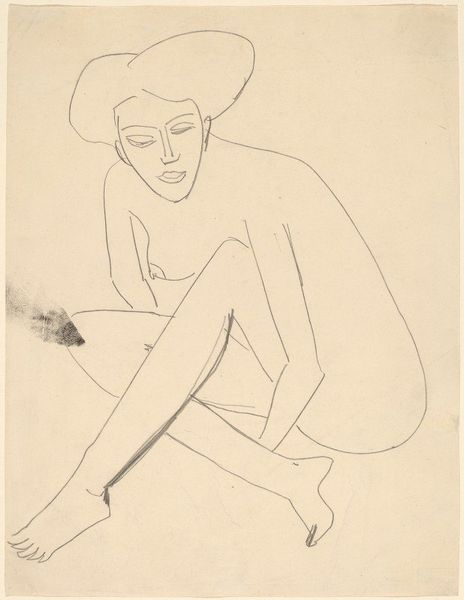
print, etching, paper
#
portrait
#
self-portrait
# print
#
etching
#
caricature
#
figuration
#
paper
#
pencil drawing
#
line
#
japonisme
#
portrait drawing
Copyright: National Gallery of Art: CC0 1.0
Curator: Tsuguharu Foujita’s 1927 etching, "Self-Portrait with Cat on the Shoulder," offers a unique window into the artist's persona. It's rendered primarily in graphite and features strong Japonisme influences. Editor: My first thought is how disarming this portrait is! There's an almost child-like vulnerability in the artist’s expression, intensified by the presence of the cat clinging to him. It makes you wonder what kind of societal pressures he may have faced. Curator: I agree that the affect is very present! Observe how Foujita uses an economy of line to define his features and the cat’s fur. The starkness is almost confrontational. It is very raw in technique. Editor: Right. This rawness can be interpreted in several ways. Here's a Japanese artist working in Paris in the 1920s; navigating cultural difference and identity. The self-portrait then is not simply representational, but perhaps a complex assertion of self in a predominantly Western gaze, complicated further by class anxieties. Curator: Or we can view the circularity present, echoed within his round spectacles that frame his thoughtful eyes and juxtaposed by the round face of the feline companion—it evokes an almost playful geometry. The sharp lines create a structured yet whimsical study in form. The tension creates an active surface. Editor: Playful, but the gaze doesn’t suggest a joyous individual. This print, I imagine, allowed him a sense of control over his own image—a way of reclaiming agency. It allowed the artist to curate his own visibility amid socio-political constraints of his time. Also, how do the two elements function, artist and animal, within the art market. Curator: An astute observation! This self-portrait functions then as more than an exercise in visual representation. It encapsulates Foujita's place in art history. His understanding of medium elevates an everyday scene into a complex visual experience. Editor: Indeed! Considering Foujita's identity, this self-portrait transcends a mere depiction of self; it embodies questions about belonging and artistic expression amid social barriers. Curator: A testament to the ability of formal elements to carry profound content! Editor: Definitely, it’s important to view an artwork within these multiple frameworks of analysis.
Comments
No comments
Be the first to comment and join the conversation on the ultimate creative platform.
